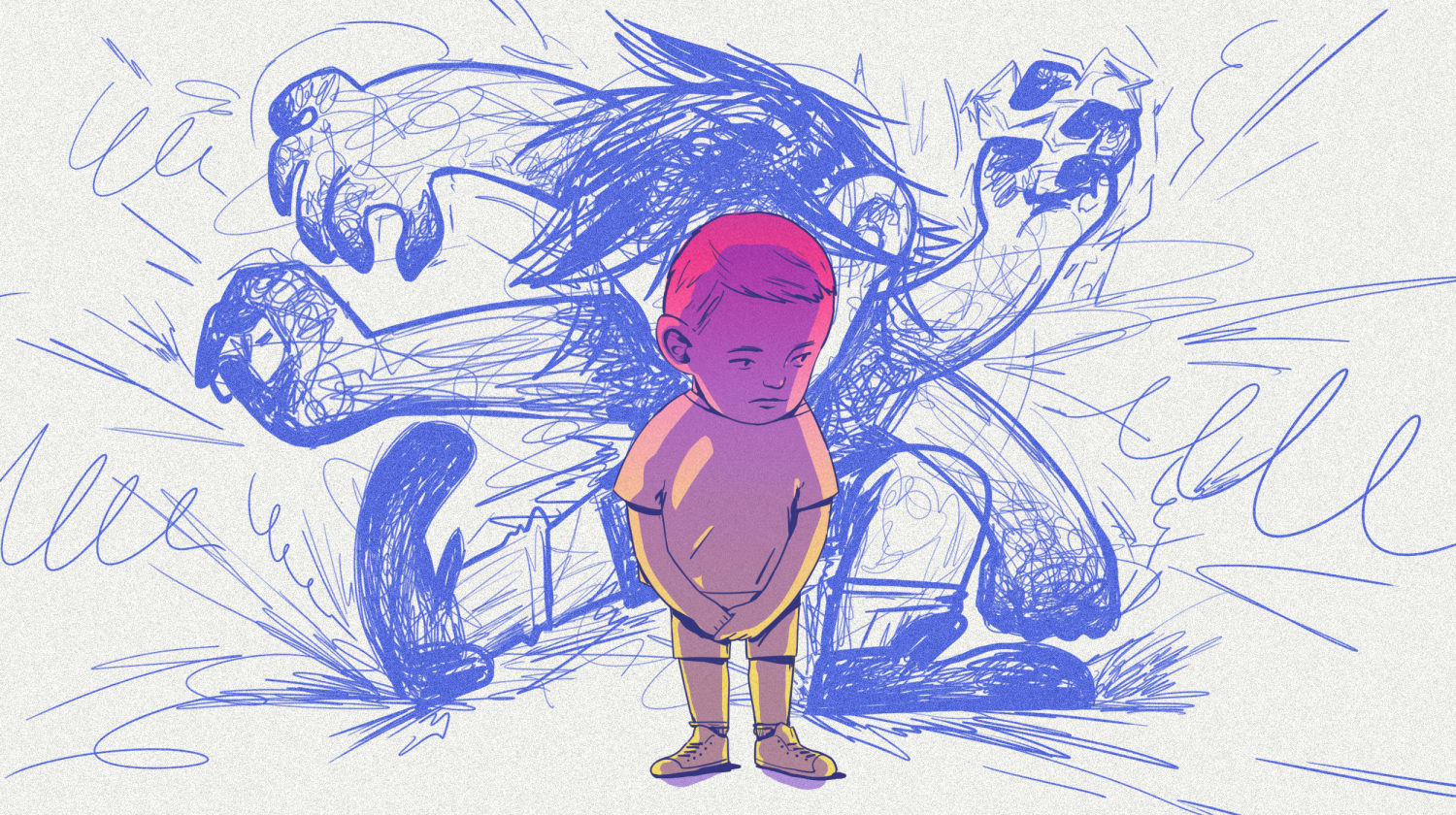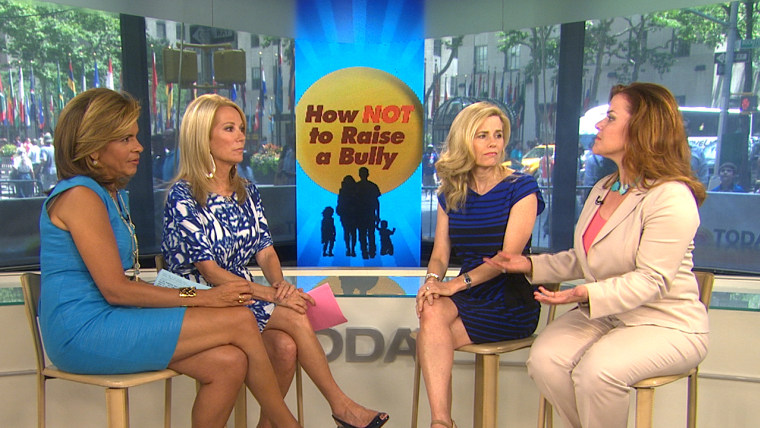It’s happening again. There’s another bully in my daughter’s camp.
The camp would not kick him out, saying, “He’s just a kid!” Of course he’s just a kid — otherwise why would he be at camp?
“He made fun of my glasses and called me a baby,” reported my 6-year-old daughter, indeed my baby and only child, but not herself a baby.
It was only the third day at her new camp, but I wasn’t going to let it go on any longer. I had already put up with a bully in her previous session at a different camp.
I’m comfortable calling him that because he was twice the size of the other kids and was making their days miserable by tripping, pinching and even dunking them in the pool. Yet it took us parents half the session to get him removed from their group.
The camp would not kick him out, saying, “He’s just a kid!”
Of course he’s just a kid — otherwise why would he be at camp?
“They’re all just kids,” I told the camp administrators. “And the other kids don’t want to come to camp because of him.”
The “but he’s just a kid” defense really bothered me. It was another way of saying “boys will be boys,” a justification used to defend playground bullies and, later, the male aggression gone largely unchecked until the #MeToo movement. How much behavior would be excused, overlooked, dismissed because of this?
Looking for guidance in how to protect my daughter, I turned to the book “Bullied: What Every Parent, Teacher, and Kid Needs to Know About Ending the Cycle of Fear,” by Carrie Goldman. It’s one of the few books that addresses bullying in younger kids offline rather than the very common and popular topic of cyberbullying of teens online.
Goldman validated my reaction in writing that “To dismiss the taunting as ‘boys being boys’ or as ‘a schoolyard rite of passage’ would send the message that the behavior was normal and acceptable.” Yet historically, an attitude of “kids will be kids” has been common, which is perhaps why so few books address the issue.
That partly may be because it can look harmless in the playground in the younger years. One has to know the difference between “normal social conflict” and bullying. If your child and his best friend fight in the playground over a toy or a swing but the next day ask for a playdate, that’s normal social conflict. It has no power imbalance, unlike someone who goes around telling everyone else to be mean to your kid.
But there’s a difference between overly excited child behaviors and bullying, which often takes the form of “taunting.” This, too, can be written off, dismissed merely as “teasing.” Barbara Coloroso, author of “The Bully, The Bullied and The Bystander,” helps distinguish between the two. “Teasing is done without intent to harm, between friends of family members,” according to Coloroso.
Failing to identify truly bad physical and verbal behavior by offering a blanket “he’s just a kid” dismissal does real damage to the children subject to it. “We now know from research that people just don’t ‘move on’ from bullying,” Goldman told me when I later interviewed her for this article. “They have long-term effects from trauma.” And, according to her research, “The younger you are when exposed to bullying and trauma, the more profound and lasting the effects are.”
Bullying tends to escalate in middle school, she says, and educators and parents focus on that — but increasingly it’s trickling down to much younger children. Goldman told me that as kids have more exposure to the media, bad behavior starts much younger. “They absorb ideas of gender norms, they absorb ideas of sexualization, of toxic masculinity — starting in preschool or elementary school,” she said.
Appropriately, one of the first chapters of her book is called “Anti-Bullying Starts in the First Grade.” Goldman defines the “anti-bullying” concept as “actively working to dismantle systems that victim-blame” as well “the status quo that keeps the victims quiet and keeps the bullies protected.” Crucially, she said, it’s pushing back when schools ask what kids did to bring on the bullying or tell them to try to “fit in.”
If the school isn’t interested in addressing the bullying, she advises taking it up a level. Otherwise, remove your kid from the school.
So I approached the head counselor at the second camp to tell her about my daughter’s experience.
“Is it M—-?” the head counselor responded. The counselors always know. “It starts so young,” she reflected. “I will talk to the administration.”
But the taunting continued, so I asked my daughter about it after camp each day. Unfortunately, I read the relevant chapter of Goldman’s book later on and learned that was something not to do.
“With normal social pain, parents should not ask about it every day, because then you are doing what I call interviewing for pain. You think you are being caring and helpful, but it makes the child feel like more of a victim” Goldman writes. “You want the child not to hear a story of victimhood coming out of her own mouth but a strategy of resilience.”
But asking my daughter about what was happening did reveal that the bullying had continued after my talk with the head counselor.
The next morning I saw M with his family and decided to speak to his dad.
According to Goldman, that can be an effective strategy. But if a parent is dismissive, saying things like, “he was just teasing,” don’t expect any help — or for the kid to change.
M’s dad was not dismissive, hanging his head in knowing shame when I told him what was happening. “I am so, so sorry. We are dealing with this at home. He teases his brothers all the time.”
“I will talk to him,” he added, not looking hopeful about it.
Goldman told me that talking — not punishing, not yelling — can help your child understand empathy. If the aggressor understands they hurt someone’s feelings, they may change. If not? They may need help with social and emotional skills, even counseling.
But as parents these days — aware of bullies and aggression and mean girls, but also “helicopter parenting“ — we need to be careful that we don’t intervene in ways that can prevent our kids from learning resilience and how to cope on their own.
“The more practice our children can get in managing normal social pain, the better they will cope as adults when they are on the receiving end of social slights,” writes Goldman, who notes that her own daughter almost always sorted out her own social problems without intervention. “But it sure is hard to tell yourself to back off…”
If the aggressor understands they hurt someone’s feelings, they may change. If not? They may need help with social and emotional skills, even counseling.
I tried a different tactic, telling my daughter about why I thought M was a bully but once the words were out of my mouth, I wondered if this was another version of “boys will be boys,” explaining away an aggressor’s actions by rationalizing them.
After camp ended (and I finally had time to finish the book), I realized I had done many things wrong.
When I was putting my daughter to sleep and we were talking about the upcoming school year, I said to her, “I know I was not that helpful with the bullies this summer, but I want you to know you can always come to me and tell me about your problems. I will always listen to you.”
Apparently that was one right thing to say.
“You know, I love you mama,” my baby said.
Source: | This article originally belongs to Nbcnews.com











